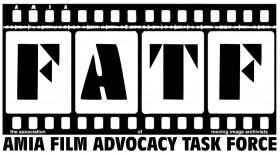Changes in cinema technology worldwide in recent years have created a commercial moving image product that is almost entirely limited to the (binary) digital format. This limitation of choice for consumers (in the form of movie theater patrons) has, as is expected in free markets, created a movement1 demanding continued access to 35mm film print exhibition.
In response to this market demand, and in service to creative freedom and the heritage of the cinema experience, director Christopher Nolan, Paramount Pictures and Warner Bros. have designed a release pattern for the science-fiction adventure film Interstellar that alters the single format paradigm and offers a new model for inclusive, democratic distribution through its conscious provision of choice of exhibition medium for audiences.
By unprecedentedly releasing in large format 70mm film, conventional 70mm film and 35mm film in addition to binary viewing formats, Interstellar reaches the widest audience possible, fulfils market demands for varied media consumption and facilitates full engagement with its themes and messages.
It also exemplifies choice in shooting and post-production mediums, staying largely within the photochemical domain throughout and avoiding the use of reductive techniques such as the digital intermediate process.
Interstellar provides the benchmark in how to release and exhibit a major motion picture in the 21st century. It is a model that other films could follow – it is eminently feasible for example to continue to strike 35mm prints (also in large format as desired) for specialist film-based theaters in major cities – much like how traditional 70mm “Roadshow” releases were carried out.
Perhaps a larger market is yet in place; the burgeoning membership for Art House Convergence and the number of film-capable theaters therein suggests a more extensive film exhibition network. And, of course, one needs only to look to the number of Interstellar film prints booked and the associated box office receipts to determine the viability of film print distribution and exhibition (this group doubts that the numbers are disappointing). It can also be argued that the contraction in the use of film for exhibition has achieved very large financial savings which more than adequately cover the cost of limited film-based releases into the future.
For those who question the ability for photochemical laboratories to cater to a reduced but sustained production of commercial release prints, Interstellar laboratory Fotokem in Los Angeles, California, to give just one example, remains committed to the business and artistry of film2.
Catering for all sections of the audience makes sound business sense, and provides ongoing market opportunities for specialist companies in servicing niche film-based exhibition.
In providing audiences with film prints for engaging with the material held by them, archives and specialist distributors likewise also commendably play their part in upholding the right of Everyone […] freely to participate in the cultural life of the community, to enjoy the arts and to share in scientific advancement and its benefits3.
Ultimately, media democracy and inclusive cinema is to the benefit of all.
1. See for example the Fight for 35mm Petition, which is statistically important due to both the volume and geographical distribution of the responses
2. cf. Presentation at AMIA 2014
3. Article 27(1) of the United Nations Universal Declaration of Human Rights 1948
Image: Screenshot from IMAX® 3D movie Hidden Universe showing the Carina Nebula
by European Southern Observatory (ESO) / T Preibisch
is licensed under the Creative Commons Attribution 4.0 International license
> PDF Version of this Article

